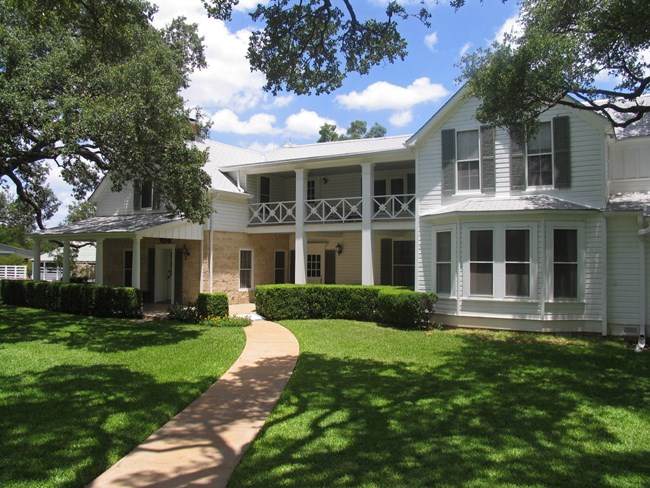Learn about NRCAs
The Natural Resource Condition Assessment (NRCA) Program provides framework, funding, and publishing support to parks to aid in the synthesis and documentation of natural resource conditions. Condition assessment reports are a tool to describe selected park resources, and record a snapshot of their current condition, identify trends, and identify potential or current threats and stressors. Understanding the condition and trend of natural resources is key for parks and NPS planners to appropriately prioritize and allocate stewardship resources.

NPS Photo.
Traditional NRCA Report: 2016
In an effort to better understand the natural resources and processes in Lyndon B. Johnson National Historic Park, a Natural Resource Condition Assessment was written and published in 2016. National Park Service representatives and staff examined the available data and needs of the park and chose 13 resource topics to evaluate:
- Viewshed |
- Groundwater |
|||||
- Night sky |
- Riparian habitat |
|||||
- Soundscape |
- Restoration of grasslands |
|||||
- Air Quality |
- Exotic plants |
|||||
- Geology |
- Live oak |
|||||
- Surface water quality |
- Landbirds |
|||||
- White-tailed deer and exotic Blackbuck antelope |
The resulting assessment showed that resource conditions within the park were mixed. Four resources were in good condition: viewshed, geology, surface waters, and grasslands. Breeding landbirds was also a mix of good condition and in moderate concern. Another six resources were given a condition status of moderate concern: night sky, soundscape, groundwater, riparian habitat, live oak, and white-tailed deer and exotic blackbuck antelope. Only two resources were given a condition rating of significant concern: air quality and exotic plants. The park faces threats typical to the southwest region, and areas close to urbanization. Drought, climate change, housing development, light pollution, increasing population, urban sprawl and water shortages are some of the issues affecting park management.
For other reports and natural resource datasets visit the NPS Data Store.
Source: NPS DataStore Collection 7765 (results presented are a subset). To search for additional information, visit the NPS DataStore.
Last updated: August 16, 2022
